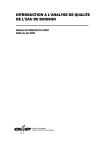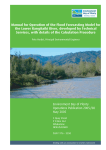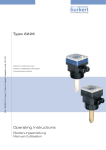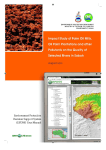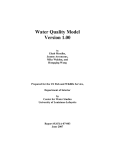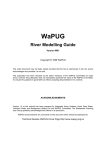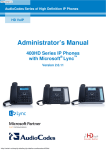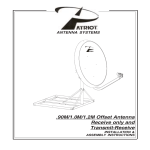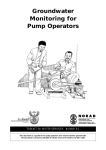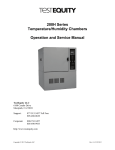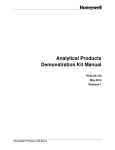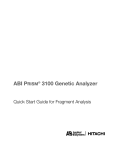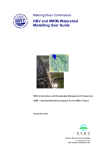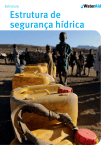Download "user manual"
Transcript
8. Information Exchange 7. Conflict Resolution 6. Water Saving Society 5. Economic Tools 4. Permitting 3. Demand Management 2. IWRM 1. WRA Integrated Water Resources Management Documents AN1.5 China – UK, WRDMAP Integrated Water Resources Management Document Series Advisory Note 1.5: Use of Qual2K Water Quality Model in IWRM Planning May 2010 Integrated Water Resources Management Documents AN1.5 Integrated Water Resources Management (IWRM) (Basics after Global Water Partnership) Ecological sustainability Enabling environment ts en m ru st in t en em • g Allocation a an • Regulations M • • Economic Tools …. ….. • • • • • Policies Legislation Fora and mechanisms for participation International / inter-provincial co-operation ….. …. • • • • In st itu tio na Level of action l R ol es Management boundaries Capacity building ….. ….. Economic efficiency Social Equity Driving Elements of Integrated Water Resources Management Environm ental Considerations Water Resources Resource Assessments Institutional Considerations Regulation and Control Water Permits Water Resources Management Resource Charges and Water Tariffs Social Considerations Water Use Norms Water Demands Economic Considerations Financial Resources (Second figure after WRDMAP) Integrated Water Resources Management Documents Summary: This document is aimed at practitioners of water resources management who are interested in employing the Qual2K water quality model as a tool to assist in that management. An overview of the modelling process is given here, including a description of the Qual2K model, it’s data requirements and functionality, as well as how to approach a modelling project from scoping the study to reporting the results. This document covers the following topics: • Overview of the modelling process • Overview of the Qual2K model • Planning the modelling work • Data processing and estimation • Calibration • Modelling different scenarios • Interpreting and reporting model results • Further uses of the model This document is part of a series addressing aspects of integrated water resources management (IWRM) under which water quality is increasingly viewed as a critical component. It should be read in conjunction with Thematic Paper 1.5 ‘Use of Water Quality Modelling for Water Protection’ and Example 1.5 ‘Water Quality Modelling in Chaoyang, Liaoning Province’. The Ministry of Water Resources have supported the Water Resources Demand Management Assistance Project (WRDMAP) to develop this series to support WRD/WAB at provincial, municipal and county levels in their efforts to achieve sustainable water use. AN1.5 1 Introduction Water pollution is a health hazard to people, and can be damaging to the environment. Water quality modelling can be used to better understand sources of pollution and to understand how the quality of the receiving waters can be improved. Practitioners of integrated water resources management (IWRM) may find water quality modelling useful for informing decisions about pollution control (such as discharge permitting) or demand management (such as abstraction permitting). A model can be used to test “what if?” scenarios which can demonstrate the effect on water quality in a river due to changes in abstractions and discharges, or changes in flow volumes (e.g. drought conditions). Conversely, discharge and abstraction limits to achieve specific river water quality targets can be investigated using a water quality model. Water quality models can be used for a variety of different purposes including analysing pollutant spills and predicting long-term water quality in rivers. This document focuses on the Qual2K model and how it can be used. Further details of the model are available in the user guide (Chapra et. al., 2006). For an overview of how water quality modelling is currently used and opportunities for future use in China, see Thematic Paper 1.5 ‘Use of Water Quality Modelling for Water Protection’. Examples shown in this document are from work undertaken with Qual2K in Chaoyang, Liaoning Province. For further details see Example 1.5 ‘Water Quality Modelling in Chaoyang, Liaoning Province’. Page 1 of 19 Integrated Water Resources Management Documents AN1.5 Model set up and calibration is an iterative process. The results usually raise questions about data gaps which allow the investigators to focus their attention on a particular data set. 2 Overview of the Modelling Process An overview of a typical modelling process is shown in Figure 1. The steps listed are described in more detail in the remainder of this booklet. Following calibration, the model can be used to test possible future scenarios. The model results should be analysed carefully and reported thoroughly. The modelling process should always begin with a planning phase which should establish the questions to be answered using the model and the availability of information. Discussions with stakeholders (such as other organisations involved in water management) are important throughout the modelling process. Data is input to the model and assumptions are made where no data is available. The model is calibrated based on the available data. Figure 1 Overview of modelling process Plan modelling work Discussion with stakeholders Begin model set up Add available data to model yes Make assumptions for unavailable values Calibrate model (using reaction rates, coefficients, dummy discharges, etc) no Check your assumptions – can you improve them? no Does the model agree well with the data? yes no yes Check the data – are there errors or gaps? Should you process it differently? Try a new “what if?” scenario (keep the calibration reaction rates, coefficients etc) Compare the new scenario with the baseline Analyse and report on results Discussion with stakeholders Page 2 of 19 Integrated Water Resources Management Documents 3 Qual2K Overview 3.1 Obtaining the model The Qual2K model is developed for the United States Environmental Protection Agency (USEPA). You can download a zip file containing the latest version of the model and supporting documentation for free from http://www.epa.gov/Athens/wwqtsc/ht ml/qual2k.html. (Note that the user manual is in English). Model development is ongoing and updates are issued on the website. 3.2 The model theory The Qual2K model is a onedimensional model and so it is assumed to be well-mixed in the vertical and lateral directions. It is a steady state model, so the flow and water quality cannot evolve over time. Diurnal variations in water quality (due to the diurnal variation in temperature and sunlight) can be simulated. 3.3 How the model functions Full details of the model’s functionality are given in the user guide (Chapra et al, 2006); an overview is given here. Qual2K is written in an Excel spreadsheet with VBA macros and a FORTRAN program to undertake the calculations. The user enters hydraulic, water quality, and climatic data (see Section 3.4). Figure 2 shows examples of typical inflows, discharges and abstractions that can be included in the model. For all inflows and discharges, both a flow rate and water quality values must be provided. For AN1.5 abstractions, necessary. only a flow rate is Figure 3 shows examples of typical hydraulic parameters that may be included in the model. This includes dimensions of river cross-sections, dimensions and parameters to describe weirs, dams or waterfalls, and the bed slope along the river. Where sufficient data is available, rating curves can also be included into the model. Guidance is given in the Qual2K user manual on how to describe hydraulic structures in the model. In a Qual2K model, the river is divided into several reaches then each reach is divided into a user specified number of elements. Abstractions and discharges can be positioned at any point along the river. If a weir, dam or waterfall is to be included in the model, this must be positioned at the end of the reach, and that reach must consist of only one element. Data at inflows are needed for the model’s calculations and can be entered into the model “Headwater”, “Diffuse Sources” and “Point Sources” worksheets. (Physical dimensions and descriptors of the reaches should also be entered into the “Reach” worksheet.) Water quality and flow data for calibration should be entered into the yellow “Hydraulics Data”, “Temperature Data” and “WQ Data” worksheets. These values are not used in the model calculations but are plotted on the output graphs for comparison with the model output during the calibration process. Page 3 of 19 Integrated Water Resources Management Documents AN1.5 Figure 2 Typical inflows and outflows required for a river water quality model Upstream boundary Inflow Tributary inflows Direction of flow Population (sewage) outflow Agricultural abstraction and runoff Industrial Downstream boundary abstraction and discharge Figure 3 Hydraulic data required for a one-dimensional model Upstream boundary Inflow Weirs Direction of flow Reservoirs & dams outflow Downstream boundary Bed slope Cross sections & water level Page 4 of 19 Integrated Water Resources Management Documents 3.4 Data requirements Qual2K requires water quality, hydraulic and climatic data and parameters for its calculations. Additional information can be found in the Qual2k user manual (Chapra et al, 2006). It is possible to use estimates of many data values if measured values are not available - the effect of this is to reduce the accuracy of the model output. AN1.5 Hydraulic required: and hydrological data • Flow rates (m3/s) at headwaters, point discharges / abstractions, and diffuse discharges / abstractions; • Dimensions for each river reach (reach length, bed width, bank slopes and bed slope); • Locations for upstream and downstream ends of each reach; • Height, width and shape of any weirs, dams and waterfalls; • Rating curve parameters where available (e.g. at gauging stations); • Manning’s n for river reaches. • Rainfall runoff data Gauging station in Liaoning Page 5 of 19 Integrated Water Resources Management Documents AN1.5 Daling River, Liaoning Province Water quality data required (at headwaters, point sources, and diffuse sources): Water quality and flow measurements are also required at locations throughout the model for calibration. • Temperature (OC) • Nitrate, NO3 (µg/l of N) • Conductivity (µsiemens) • Organic Phosphorus (µg/l of P) • Inorganic Solids (mg/l, dry weight) • Inorganic Phosphorus (µg/l of P) • Dissolved Oxygen (mg/l of O2) • Air temperature • Phytoplankton (µg/l) • Wind speed • CBODslow (mg/l of O2) • Dew point temperature • CBODfast (mg/l of O2) • Percentage cloud cover • Detritus (POM) (mg/l, dry weight) • Percentage shade • Pathogens (cfu/100 ml) • Organic Nitrogen (µg/l of N) • Alkalinity (mg/l of CaCO3) • Ammonia, NH4 (µg/l of N) • pH The reaction rates and settling velocities for the water quality parameters are typically user defined parameters. Default values for the reaction rates and settling velocities are provided in Qual2K but may be adjusted during calibration. Climatic data required: Page 6 of 19 Integrated Water Resources Management Documents 4 Planning the Model The modelling process should always begin with a planning phase which should establish the questions to be answered using the model. 4.1 Mapping When planning your model, always start with map(s) of the area, preferably using GIS software. Include as many of the following things as possible on the map(s): AN1.5 Using these maps throughout the modelling will help with planning the model, processing the data, calibrating the model and analysing the results. 4.2 Model scope A scoping phase should be undertaken before any modelling or data collection. The following questions should be considered: • What questions do we want the model to help us answer? • What information and data is available? • Where should we focus in on? (e.g. highly polluted reaches) • River and tributary centrelines • Digital elevation map (DEM) • Catchment boundary • Reservoirs and lakes • Flow gauging stations • Water quality monitoring points • Areas of habitation 4.3 Model schematisation • Pollution discharge locations • Abstraction locations (where water is extracted from the river, not the location of the entity with the abstraction license) • Structures affecting the flow • Drinking water supply zones • Agricultural areas During the scoping stage, the model schematisation should be determined. Schematisation describes how the model will be used to represent the water bodies being studied. This includes identification of the location of the boundaries, nodes and reaches required, as well as how to represent features such as reservoirs or coastal influences. • Groundwater abstractions As you develop the model, you should also include on the map(s): • Model boundaries • Model nodes and reaches (numbered as in the model) • Contributing catchment for each model reach • Names or identification labels for any discharges, monitoring points etc as included in the model Using your map and the answers to these questions, you can decide what area the model will cover. Model boundaries and calibration nodes are usually determined by the locations of gauging stations because of the need for flow and water quality data as model input. Other nodes can be positioned at particular locations of interest (where a result is required), at confluences with tributaries, or at physical features (such as dams) which must be included in the model to represent the hydraulics appropriately. Care must be taken to represent the hydraulics of the water bodies Page 7 of 19 Integrated Water Resources Management Documents appropriately so that the change in conditions from one node to the next can be successfully modelled. For example, if a river system under study using a 1D model contains a large reservoir, model nodes and crosssections must be included to allow the volume of the reservoir to be represented. In large reservoirs, residence time is sufficient for significant water quality changes to occur during the reservoir transit. It is therefore necessary to include suitable cross-sections within the reservoir so that the model is able to approximately reproduce the time delay and therefore the decay processes taking place within the reservoir body. In such a circumstance just including a cross section upstream of the reservoir and one immediately downstream of the dam would lead to erroneous results from the model downstream of the reservoir as the storage volume of the reservoir would be grossly underrepresented. The reservoir dam must also be included in the model to allow the reservoir reach(es) to fill up with water. AN1.5 4.4 Stakeholder involvement It is beneficial to involve other stakeholders throughout the project, but particularly at the planning stage. Stakeholders might include other agencies with some responsibility for water quality such as municipal, provincial and county level EPB, WAB, and Hydrological Bureaux. Benefits from stakeholder involvement: • Efficiency - multiple organisations using a single model can reduce costs • Information sharing – the more data available, the better, so share and discuss information between all stakeholders • Improve model acceptance – people who have been involved in the modelling are more likely to believe and understand the results. Involving stakeholders in the mapping stage Page 8 of 19 Integrated Water Resources Management Documents AN1.5 Figure 4 Example of map showing rivers, reservoirs, catchment boundary and DEM Figure 5 Example of map of the reach to be modelled and monitoring locations Page 9 of 19 Integrated Water Resources Management Documents AN1.5 5.2 Simplifications for Qual2K 5 Data Processing and Estimation Simplified cross-sections Qual2K requires a simplified crosssection that is defined by the bed width and the slope of each bank. This information can be taken from survey data, or estimated during site visits. 5.1 How to use observed data Observed data should be used at model headwaters and for individual enterprises (point sources). Other observed data should be included in the yellow data sheets for calibration. For a low water level, it would be inappropriate to simplify the entire cross section shown in Figure 7. A more suitable approach is to simplify the small channel in which the water actually flows at this flow rate. Figure 6 shows a small part of the surveyed cross section (which represents the river at low flow) on which a simplified cross section has been superimposed. A simplified cross-section for use during high flows is shown in Figure 7. Data sets should be consistent, i.e. all data should be from the same sampling round, or a long term average. If no data is available for a particular inflow for that monitoring round then the data may be estimated (based on other data if available). Observed data values should NOT be changed during calibration. The estimation of the simplified crosssection is simply done by eye, with the aid of a graphical comparison in an Excel spreadsheet. Figure 6 Cross-section for low flows Figure 7 Cross-section for high flows 168 surveyed water level 164 E levation (m ) E levation (m ) 165 167 166 165 surveyed water level 164 163 162 163 275 295 315 D istance from left bank (m ) 70 170 270 D istance from left bank (m ) Page 10 of 19 Integrated Water Resources Management Documents AN1.5 the Qual2K user guide (Chapra et al, 2006) Coefficient a is based on the quality of the water flowing over the weir and coefficient b is based on the shape of the weir. Rating curves Qual2K can use a simplified cross-section for weirs, dams, and waterfalls Describing weirs Qual2K models weirs, dams and waterfalls in the same way. For each structure the model requires the height and width (in metres) and two coefficients a and b. The coefficients should be estimated using Table 7 in Qual2K allows rating curves of the form V=aQb and H=αQβ, where V is the average velocity, Q is the flow rate, H is the water level, and a, b, α and β are coefficients and exponents respectively. The values are entered into the “Reach” or “Headwater” worksheets as appropriate. Rating curves were derived for Chaoyang Gauging Station by creating “best fit” curves for the data which fit the Qual2K format for rating curves. (See Figure 8 below.) Figure 8 Example of rating curve Water level (m above datum) . 98.7 98.5 98.3 H = 0.11Q 0.49 98.1 97.9 0 5 10 3 Flow rate (m /s) 15 Page 11 of 19 Integrated Water Resources Management Documents 5.3 How to estimate data Learning how to estimate successfully takes practice. When estimating, try to: • Keep it simple – use a fast and straightforward process. • Base estimates on data from similar locations where possible. • Base estimates on local knowledge and experience – visit the site, perhaps some parameters can be guessed from local knowledge. • Consult the literature – there may be an approximation that can be adopted (e.g. Box 1). Box 1: Adopting approximations Qual2K includes CBOD, however this was not measured in Chaoyang. Instead, BOD5 and CODcr values were measured. A literature search revealed a number of possible ways to estimate CBOD from COD or BOD. The most appropriate approximation was to assume that CODcr ≈ CBOD (Bartram and Ballance, 1996). Estimated data values should be clearly marked as such (e.g. use bold red text in the model for estimated values). A record should always be kept of how values were estimated (even if it just says, “Mr Liu suggested this value based on his experience”). 5.4 Quality control AN1.5 Begin by reviewing and checking the data. This may be most easily accomplished by plotting the data as a visual aid. Ask yourself: • Is the data believable? (If you are not familiar with local water quality, ask someone who is.) • Is the data consistent? (E.g. is a high water temperature observed with a low air temperature? Is the data unexpectedly dramatically different at one location?) • Is the data similar to the data from last time? (Compare with the last sampling round, or with data from a year ago.) • Is there any data missing? (Check the data against the map of sampling points – is everything there?) Keeping records Always record what data has been received and any changes made to the data (such as data processing, correction of erroneous data, etc.) as well as any assumptions made This will help you to trace back through what was done if you need to find an error or check an assumption. Check data processing Data processing work should always be checked independently. Mistakes are easy to make and can be difficult to find later – a lot of time can be saved by checking the data processing early. Checking incoming data Data should be checked as soon as it is received. Any errors or omissions will be easier to correct straight away. Page 12 of 19 Integrated Water Resources Management Documents AN1.5 Table 1 Interdependencies between water quality determinands Parameter Dependency (↑ = increases due to; ↓ = decreases due to) Water temperature Affected by conduction, convection (affected by air temperature and wind speed) ↑ Solar radiation (↓ shade and cloud cover) and atmospheric long-wave radiation (↑ air temperature) ↓ evaporation (affected by water and air temperatures) ↑ hydrolysis ↓ settling ↑ plant photosynthesis and reaeration if water is under-saturated ↓ CBODfast oxidation, nitrification, plant respiration and reaeration if water is over-saturated DO saturation is dependent on the water temperature (increased water temperature leads to saturation at lower DO concentration) ↑ dams/weirs/waterfalls In other reaches, can be specified by the user, otherwise: ↑ increased water velocity, increased wind speed, ↓ increased water depth ↑ detritus dissolution ↓ hydrolysis and oxidation ↑ detritus dissolution and hydrolysis of CBODslow ↓ oxidation and denitrification ↑ plant death ↓ hydrolysis and settling ↑ organic nitrogen hydrolysis and phytoplankton respiration ↓ nitrification and plant photosynthesis ↑ nitrification of ammonia ↓ denitrification and plant photosynthesis ↑ plant death ↓ hydrolysis and settling ↑ organic phosphorus hydrolysis and phytoplankton respiration ↓ plant photosynthesis (and settling if sorption onto settleable particulate matter such as iron oxyhydroxides occurs) ↑ photosynthesis ↓ respiration, death, and settling ↑ plant death ↓ dissolution and settling ↓ death (natural die-off and light) and settling ↑ plant respiration, organic nitrogen and organic phosphorus hydrolysis, and denitrification ↓ nitrification Also affected by plant photosynthesis, but this can be ↑ or ↓ Dependent on alkalinity, total inorganic carbon, dissolved carbon dioxide Conductivity Inorganic Solids Dissolved Oxygen Reaeration CBODslow CBODfast Organic Nitrogen Ammonia, NH4 Nitrate, NO3 Organic Phosphorus Inorganic Phosphorus Phytoplankton Detritus Pathogens Alkalinity pH Total inorganic carbon Dissolved CO2 ↑ CBODfast oxidation and plant respiration ↓ plant photosynthesis Calculated from the DO reaeration rate Italic text: parameters which are calculated by the model or set during calibration rather than input to the model. Page 13 of 19 Integrated Water Resources Management Documents may be useful for reaches such as reservoirs that behave differently). 6 Calibration 6.1 The calibration process It is standard practice to begin with the default parameters (unless measured values are available), then adjust them as necessary during calibration. Calibration is an iterative process: • the model is run with the available data and initial estimates of reaction rates, settling velocities, etc.; • the co-located modelled and observed values are compared; • the estimated calibration parameters are adjusted until a reasonable match is achieved between modelled and observed values. Values for substance concentrations, flow rates, and/or water depths are typically compared during calibration. Qual2K stores observed data calibration in yellow “data” sheets. AN1.5 for Note that tributaries should be calibrated before attempting to calibrate the main river. This is because the tributary discharge will affect the river water quality. When adjusting the reaction rates and settling velocities during calibration, care should be taken to ensure that the resulting values remain realistic. Examples of realistic reaction rates and settling velocities can be found in standard texts (e.g. Bowie et al, 1985). If there is concern over a particular value, sensitivity tests can be conducted. During sensitivity testing a range of values are used for the uncertain parameter and the differences in the model results are assessed. This can give an indication of how critical that particular value is. Observed data values should NOT be changed during calibration. The calibration procedure usually raises questions about data gaps; ways to deal with these issues are described below. 6.2 What can be adjusted during calibration? During calibration, any estimated values can be adjusted (within realistic bounds). The reaction rates and settling velocities for the water quality parameters are typically userestimated parameters. They can be set for the entire model in the “Rates” worksheet, or for individual reaches in the “Reach Rates” worksheet (which Locals and construction in the Daling River Page 14 of 19 Integrated Water Resources Management Documents AN1.5 6.3 What if calibration cannot be achieved? • Groundwater infiltration volumes • Individual abstractions Sometimes changing typical calibration values such as Manning’s n and reaction rates (within reasonable values) cannot force the model to match the observed data. • Individual discharges In the longer term, data should be collected for these missing values, however in the first instance the missing values can be estimated during the calibration process and the estimates introduced to the model as “dummy” values. In this situation, the first action should be to check the input data and data processing again. The assumptions should also be checked and revisited to ensure realistic values. Model results can therefore indicate the scale of the unavailable information such as ungauged pollution discharges or groundwater infiltration. When calibration in this manner is not possible, it may be because some information is missing such as: Box 2: Calibration example During calibration of the Chaoyang model it became clear that large amounts of water are lost along some reaches of the main river. These losses were determined (based on local knowledge) to be due to groundwater infiltration, which is exacerbated by local groundwater abstraction for irrigation. An estimate of this infiltration was included in the Qual2K model as a “dummy” diffuse abstraction to match the flows observed in the river. The results of this rough calibration are shown in Figure 9. At some other locations there was a clear discrepancy between the observed data and the model results; it was assumed that this was due to unknown abstractions and discharges. These were included as “dummy” point sources in the model. Figure 9 Effect of infiltration estimate on model predicted flows a) without infiltration b) with estimate of infiltration 6.00 6 Flow (cumecs) 5.50 5.00 5.00 4.50 4.50 4.00 4.00 3.50 4 3.50 3.00 3.00 2.50 3 2.50 2.00 2.00 1.50 2 1.50 1.00 1.00 0.50 0.50 5 5 4 3 2 1 0.00 180 1 160 160 140 120 120 100 Q, m3/s 80 60 80 Q-data m3/s 40 40 20 0 0.00 180 160 160 140 120 120 100 Q, m3/s 80 60 80 Q-data m3/s 40 40 20 0 Distance from downstream end of model (km) Page 15 of 19 Integrated Water Resources Management Documents AN1.5 7 Scenario Testing 8 Model Results A new scenario may be modelled by making a change to some input data (e.g. the water quality of a discharge) and comparing the new model result (“scenario”) with the calibrated model result (“baseline”). 8.1 Interpreting results For scenario modelling, the values adjusted during calibration (e.g. reaction rates) should be retained. The scenario runs undertaken should depend on the questions that the model is being used to answer. Typical scenario runs are: • Changes to discharges from individual enterprises to inform discharge permitting • Changes to abstraction volumes for individual enterprises to inform abstraction permitting • Removal of artificial discharges and abstractions to estimate of the natural water quality • Decrease in headwater inflows and rainfall runoff to inform drought management planning The results of the scenario test should be compared with the baseline results, see Box 3 for an example. Always discuss the results with people who know the local area and water quality. They may be able explain data discrepancies and may notice unrealistic (possibly erroneous) data values. The results from the calibration process may indicate where there are gaps in the data or where there are unknown processes occurring. Results from the scenario testing predict future water quality based on the scenario conditions. This can be used to test proposed permitting conditions. 8.2 Reporting Preparation of a final report is the conclusion of the model development and operation process. The final report should be a synopsis of the different stages of the modelling process. A thorough report of the modelling study will be a useful record of the following for anyone wanting to use the model in the future: • What data was used and how it was processed. • Estimated values and how they were estimated. • The calibration process including which values were adjusted and why. • The model results, the interpretation of these and the conclusions. An example report structure is shown in Box 4. Page 16 of 19 Integrated Water Resources Management Documents AN1.5 Box 3: Example of scenario testing in Chaoyang Many individual enterprises discharge into the Shijia tributary that joins the Daling River just downstream of Chaoyang. A scenario was modelled to investigate the ammonia load from two paper mills. The concentration of ammonia was approximately halved for both mills (from ~200 mg/l to 100 mg/l). The predicted ammonia concentrations in the Shijia river were compared (Figure 10). The change to the discharge of the smaller mill (mill 1, 0.7 l/s) did not have as much impact as the change in the larger (mill 2, 70 l/s) because of the relative sizes of the discharges. Although this was a hypothetical scenario, it clearly demonstrates the usefulness of the scenario modelling process to investigate the effects of possible discharge permits. Figure 10 Scenario and baseline comparison Model baseline Minimum NH4-data Scenario Maximum NH4-data NH4 (ugN/L) data Ammonia (ug/l N) 45000 Paper mill 2 40000 35000 30000 Paper mill 1 25000 20000 15000 10000 5000 0 20 15 10 5 0 Distance from downstream end of Shijia River (km) Page 17 of 19 Integrated Water Resources Management Documents AN1.5 Box 4: Example report structure 1.Introduction o Background o Purpose of Modelling o Description of Catchment (including map and photographs) o Aims and Objectives o Data Availability (list all monitoring locations and positions on map, list of all parameters available) o Data Processing (explanation of treatment of data, e.g. median values used) o Data Estimation (explanation of method for estimating each value, including initial pre-calibration estimate) 2.Data 3.Model Setup o Model Schematic (overlaid on map) o Model Overview (explanation of what data was used where in the model) 4.Model Calibration o Overview of Calibration Process o Description of Adjusted Values (explanation of values adopted for calibration and “dummy” parameters including explanations of their estimation.) o Calibration Results (graphs showing how well the results match the observed data) 5.Scenarios o Scenario 1 (description of scenario, how the model was adjusted, presentation of results and discussion.) o Scenario 2… etc (same for each scenario) 6.Conclusions o Conclusions (summary of conclusions from model calibration, results and scenario runs) o Assumptions (summary of assumptions and estimations made in the model) o Limitations (what the model is appropriate for, what it should not be used for) Appendix A Detailed User Guide (Information for someone else to pick up and run the model. It should include the names and locations of all the different model files and instructions on how to run the model.) Appendix B Detailed Results Tables (Full results tables to allow someone to check whether they have completely reproduced the model results.) Page 18 of 19 Integrated Water Resources Management Documents AN1.5 9 Further Use of the Model Development of a water quality model can incur a high cost. The model should therefore be considered as a valuable capital asset. This type of 1D water quality model should be developed with a view to continually updating the model as new data becomes available. This new data might be the result of: • Focussed data collection for expanding the model • Investigation into “missing” data such as ungauged discharges • Regular routine monitoring The calibration process should be repeated each time new data is included in the model. The model should be reviewed periodically to ensure it still adequately represents the river system. This review should be reported with evidence to back up the conclusions. If changes are required to the model, these should also be documented. Presentation of model results in Chaoyang, Liaoning Page 19 of 19 Integrated Water Resources Management Documents AN1.5 Document Reference Sheet Glossary: Baseline Calibrated model result showing the existing conditions. Boundaries The edges of a model – for a 1D model, upstream and downstream boundaries are required. Data is required to establish conditions at the boundaries – typically flow, water level, and water quality conditions. Calibration Calibration is the process whereby estimated model parameters (e.g. reaction rates) are adjusted so that the result agrees with the available data. Cross-section Profile of the river bed and banks, perpendicular to flow direction. DEM Digital Elevation Model – a GIS based data set comprised of topographic data. Dummy value Estimated value to account for an unknown or ungauged discharge or abstraction, e.g. dummy diffuse abstraction to model groundwater infiltration. GIS Geographical Information System – software for storing and displaying spatially referenced data, e.g. ArcGIS software. Headwater The upstream end of a watercourse. Model headwaters may be located in the middle of a river; in this case it is the upstream boundary of the model. Manning’s n Roughness coefficient used in open channel flow equations. It is estimated from the channel conditions and optimised during calibration. Node Many models use “nodes” which are point locations at which the hydraulic and/or water quality calculations are made. Some models are cell based instead, and calculate values at cell centres. Numerical Numerical models use equations without an exact solution. Numerical (typically computational) methods are used to solve the equations. Rating curve A relationship between flow and water depth at a specific location. Reach A length of river, usually between two nodes. Scenario A hypothetical situation modelled by adjusting input parameters to predict a possible future water quality, e.g. river water quality resulting from a stricter discharge permit. Steady-state When conditions do not change with time; an equilibrium condition. Integrated Water Resources Management Documents AN1.5 Document Reference Sheet Bibliography: Bartram, J. and Ballance, R. (1996), Water quality monitoring, Spon, London, UK. http://www.who.int/water_sanitation_health/resourcesquality/wqmonitor/en/index.html Bowie, G.L., et. al. (1985), Rates, Constants, and Kinetics Formulations in Surface Water Quality Modeling (2nd ed.), US EPA (document EPA/600/3-85/040). http://www.ecy.wa.gov/programs/eap/models/rates_and_constants/index.html Chapra, S.C. (1997), Surface Water Quality Modelling, McGraw-Hill Chapra, S.C., Pelletier, G.J. and Tao, H. (2006). QUAL2K Documentation and Users Manual. Civil and Environmental Engineering Dept., Tufts University, Medford, MA. http://www.epa.gov/athens/wwqtsc/html/qual2k.html Related materials from the MWR IWRM Document Series: Thematic Paper 1.5 Use of Water Protection Quality Modelling for Water Example 1.5 Water Quality Modelling in Chaoyang, Liaoning Province Advisory Note 1.7 Designing a Monitoring Programme for Water Quality Modelling Advisory Note 8.4 Inter-agency Agreements for Collaborative Water Quality Management Where to find more information on IWRM – recommended websites: Ministry of Water Resources: www.mwr.gov.cn Global Water Partnership: www.gwpforum.org WRDMAP Project Website: www.wrdmap.com Integrated Water Resources Management Documents AN1.5 Integrated Water Resource Management Documents Documents will comprise of: Thematic Papers 3. Demand Management 2. IWRM Produced under the Central Case Study Documentation Programme of the GoC, DFID funded, Water Resources Demand Management Assistance Project, 2005-2010. 1. WRA China – UK, WRDMAP Training Materials IWRM Document Series materials, English and Chinese versions, are available on the following project website 5. Economic Tools Examples 6. Water Saving Society Manuals 4. Permitting Advisory Notes 8. Information Exchange Advisory Services by : Mott MacDonald (UK) leading a consultancy team comprising DHI (Water and Environment), HTSPE (UK), IWHR, IECCO (Comprehensive Bureau), CIAD (China Agricultural University), Tsinghua University, CAAS-IEDA, CAS-CWRR, Gansu WRHB and Liaoning WRHB. 7. Conflict Resolution WRDMAP Project Website: www.wrdmap.com
























